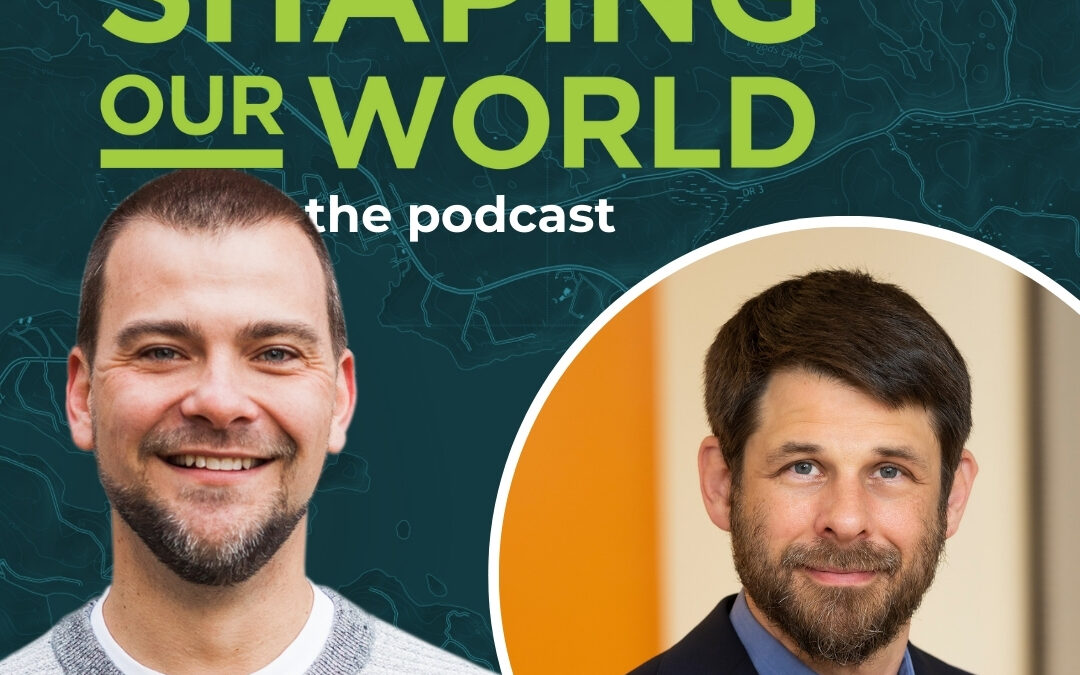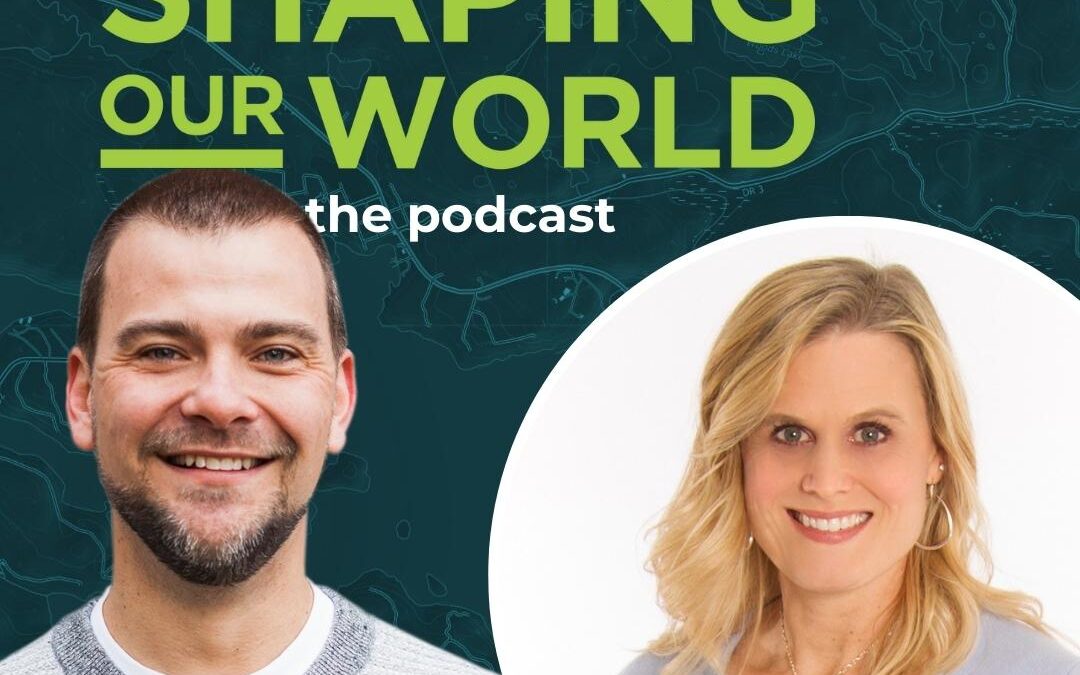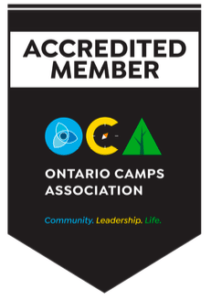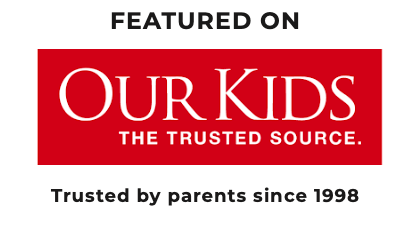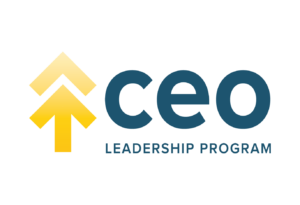[00:00:12.970] – Chris Tompkins
Well, hey, I’m Chris Tompkins, and welcome to the Shaping Our World podcast. My goal is to invite you into a conversation that will leave you more confident in understanding and inspiring the young people in your life. In each episode we talk with leading experts and offer relevant resources to dive deeper into the world of our youth today. Today, we’ve invited Amanda Yuill to join us. Amanda has been an elementary teacher for over 20 years. She has her Master’s of Education specializing in teacher training. She’s written three books for teachers called Substitute Teaching, Reaching and Teaching Them All, and What’s the Difference? Amanda won the Writers Award from the elementary Teachers Federation of Ontario, and her books appear in many educational magazines. She speaks at conferences and presents workshops to boards of education and teachers colleges. She currently works in the Toronto District School Board.
[00:01:09.450] – Chris Tompkins
Amanda, welcome to the show.
[00:01:11.630] – Amanda Yuill
Thank you so much.
[00:01:12.880] – Chris Tompkins
Yeah, it’s great to have you. So our podcast is called Shaping Our World, and we always ask our guests a few questions to get going. So what shaped your world when you were a teen?
[00:01:23.850] – Amanda Yuill
I was still really involved with my family as a teen. And our family loves sports and camping. And my dad loved movies. I remember he took us to The Empire Strikes Back. When it came out, I might be dating myself a bit here, and he was so mad at the cliffhanger ending.
[00:01:42.820] – Chris Tompkins
Yeah. Because in those days, you had to wait a lot of years for the next one to come out.
[00:01:47.330] – Amanda Yuill
Yeah.
[00:01:47.830] – Chris Tompkins
I can remember seeing that in the theaters, too. So we’re dating ourselves as far as age and stage of life. And I think I remember feeling the same and was so excited for Return of the Jedi. That was, to me, the highlight coming back from that cliffhanger.
[00:02:04.860] – Amanda Yuill
Oh, yeah. We totally saw that as a family in the theaters.
[00:02:07.430] – Chris Tompkins
Yeah. So what’s Shaping Your World today? Tell us a little bit about you.
[00:02:12.750] – Amanda Yuill
Sure. Still, I’m involved with family and friends, and my faith is important, so I’m involved. I do the nursery at Church, so little babies hopefully give the moms a bit of a break. And then I have a young adults group. We meet online every week and chat about life and laugh. There’s a lot of laughter going on in that group. It’s online. I asked if they wanted to go back in person. They were like, no, this is great.
[00:02:42.270] – Chris Tompkins
Yeah. There is a convenience now to the online world for some of these things. That does help us for sure. Well, that’s great. So what are you doing now that’s Shaping the World of teens and kids and young adults? Tell us a bit more about your career and what you do.
[00:02:58.950] – Amanda Yuill
Sure. So I’m a teacher, as you read. I’ve been a teacher for over 20 years, and I love it. And I teach elementary school. So from four to 14 years old, and I really love the intermediate kids who are like twelve to 14. I love their sense of humor. They make me laugh a lot. And in 2016, I wrote a book for teachers about substitute teaching. And then since then, I’ve written two more books for teachers. And I really saw gaps in the training for teachers. And I wanted to fill in places where there just wasn’t as much training for teachers. So, for example, nowadays there’s lots of students who have extra needs in our classroom, but the teachers aren’t trained for that. So I do workshops and speak at conferences and try to help teachers sort of fill in the gaps in the training for what they’re required to do right now. And hopefully that helps the kids.
[00:03:54.120] – Chris Tompkins
Yeah. And that’s great. That’s why we have you you’re primed to give us some input into what you’re seeing out there. So let me just jump right into it. So you’ve been teaching for a few decades now. What do you think are some of the main differences you’re seeing in students help us get caught up on where students are today and maybe the progression of journey for young people?
[00:04:15.000] – Amanda Yuill
Sure. One of the really major differences now from when I started teaching is that students are so much more self aware. They’ve been taught to look at their feelings and to figure out if they’re not doing well, how to do better. Every student in an elementary school knows how to do deep breathing and counting and even positive self talk, which is so, so amazing. Really things have come a long way. And then the second major difference is that the definition of normal has expanded so much when I was in school. You should be good at sports and you shouldn’t be too smart. That wasn’t too cool. But nowadays, because there’s just so much integration in the classroom, the definition of normal is just so much wider. And so the students nowadays are just used to such a broader variety of people. And that’s okay. And I think that’s really great. The only really difficult thing I think, is because of COVID, there’s been a lot of isolation, and a lot of students are still struggling with maybe a bit of more anxiety than they would have had otherwise, and even some with depression. And so that’s also a major issue right now is mental health issues.
[00:05:37.380] – Chris Tompkins
Yeah. And I think we could probably do an entire podcast on the relational dynamics in kids, and that we’ve seen the opposite side of it, what happens when it’s taken away. And just to then reinforce how significant is we saw that at summer camp with kids just excited to be together, even sitting in a field, just the smile on their face because of what they’ve been kind of robbed of through that season.
[00:06:04.650] – Amanda Yuill
One of my grade seven students says, I can’t believe I’m saying this, but I don’t want to be on my computer and I want to go back to school.
[00:06:14.370] – Chris Tompkins
Yes, I know. I joke sometimes thinking, man, what would I have done at that age back in the day if I was told you get to stay home and be on your computer? I’m not sure my Scholastic endeavors would have been that good even where I was at and what kept my attention when I was a student. So, yeah, let me ask you, too. You’ve obviously worked with a lot of students. You have a lot of focus around helping young people thrive, and you’ve probably journeyed with a lot of students at various levels of student success. So what do you think are some key characteristics and maybe contributing factors for students that thrive and progress well through school? And then on the other side, what do you notice about young people that are kind of struggling through? What are some characteristics that we can kind of identify there?
[00:07:06.030] – Amanda Yuill
So the students who thrive, there are sort of two main things that really help them. And the first one is the parents involvement in their life. When students have parents who are involved, who care, who advocate for them to help them figure out who they are, they do well. And even if they struggle a bit with academics, it’s okay because they have that support from home. And the other thing is there are some students who don’t have the support from home, but in themselves, they have decided that they’re going to do well. And so even without the support at home, these students really do well in school because they’ve decided that they’re going to do that. And I just think it’s so incredible to see them succeeding with so little support.
[00:08:00.520] – Chris Tompkins
How do you think a student gets to that perspective? And maybe how can adults who maybe aren’t parents who see that in other kids kind of feed into that and encourage that?
[00:08:12.030] – Amanda Yuill
Yeah. So one of the things that I do notice, a lot of these students, even if they have minimal support at home, they’ve had really strong mentors in their life. So maybe an aunt or maybe a Boy Scout leader or somebody at Church or a temple or somebody or maybe they had really great teachers. And the key is that somebody has said to them that they’re really good at something like they have found their strength and pointed it out and help them work on that strength. And that’s given them confidence. Anyone can do that with a child or with a young adult find their strength because they all have strengths. And that’s the other thing. Just as adults working with young people, like the belief that all students, all children have something in them that they’re strong and that they’re good at. And it’s just a matter of uncovering it.
[00:09:06.180] – Chris Tompkins
Yeah. And that is what I love when you say that because recognition is so important being seen. And in some ways it’s like so simple. Yet why is it so hard for us? And maybe that’s a bit of a rhetorical question. Right. Because complimenting people can feel really challenging where I think as human beings, we’re maybe a little more wired, especially as DAREarts to give critiques. Right. And we’re probably as a group of human beings, not as good at going, hey, I see this in you, but you’ve illustrated something really important, the power of that simple gesture to have somebody Calce something out and speak into that. And you’ve highlighted what you’ve seen in the classroom is that being a contributing factor to student success and helping them thrive.
[00:10:00.790] – Amanda Yuill
Yeah. I think often the students who are struggling, it’s often not difficult to know why. You can see that. Maybe there’s been a death in the family recently or a parent who’s lost a job or they’ve moved from another country when there’s no real obvious reason for a student to be struggling. I look to undiagnosed issues, especially in girls. Girls tend to be really good at copying others and covering issues they’re having. So, like maybe a girl with dyslexia that might not be diagnosed until she’s 1415, whereas with the boys, it tends to get diagnosed at four or five years old. Right. And so I think when students are struggling, it’s time to start asking questions, looking at what they’re struggling with, and finding digging a little bit deeper.
[00:10:57.160] – Chris Tompkins
Yeah, that’s really helpful. So the mechanisms of the modern classroom have evolved over the past few years because of remote learning. And we talked a little bit about that at the beginning from, like, even an isolation standpoint. But how do you envision the teaching profession evolving and changing due to this new way of engaging students? Obviously, there’s some a phrase we often use, and I’ve taken from a mentor, as you know, affirming the virtue and discerning the vulnerability of things. So how do you see the virtual classroom evolving and changing the way that we educate kids?
[00:11:35.830] – Amanda Yuill
Yes, definitely. Definitely. It has changed how we teach. Like, when we’re in the school, teachers are using way more technology to teach way more. The students are more engaged because they love that, and that’s not going away for sure. The thing that I really hope is that I really hope that virtual learning doesn’t go away completely because for some of my students. So this year I’m teaching in person. But last year I taught online all year, and I had two students who thrived online who were struggling in class. And so virtual learning obviously suited their learning style. And so I really hope and there’s going to be a percentage of students for whom that’s true. And I really, really hope that virtual learning does not go away completely because it suits certain students learning styles. And more than that, I hope there’s not just two learning models. I hope there’s five or ten learning models. Not all students fit into the school program. Not all students fit into the online program. Some students fit self learning programs or individual. The teacher comes once a week can help to you. I really hope that there Yuill be more and more learning models.
[00:12:50.930] – Amanda Yuill
That’s my hope for the future. And I think it’s possible now that we’ve seen that virtual learning can help some students.
[00:12:58.710] – Chris Tompkins
Yeah. And so what would your advice be to DAREarts who are kind of journeying alongside. And sometimes as parents were like, oh, you need to get off your screen and technology and virtual is bad. Or we maybe don’t see some of the advantages of, like you’ve said, different modes of learning. And so how could a parent kind of come alongside their child and discover a bit more of this and how learning works and support them in their kind of academic pursuits, given the uniqueness of the opportunities they see both virtually and in person?
[00:13:34.450] – Amanda Yuill
Yes, I would say for probably 90% of students in school, learning is going to be better and it’s going to be obvious. And for sure, we need to be getting them off their devices and outside and playing. Children need to run around. Young adults still need to move around. Even though they wish they could sleep in bed all day. They still need activity. It’s good for them, good for their mind, good for their body. I think it’s fairly obvious when your child is thriving online because so many don’t. The parents of the two students last year, when they were doing so well, were amazed at how well I think you don’t have to go looking. I think if your child is obviously doing better online, then you want to be looking for programs that are going to be continuing with that. And if you find that your child is having trouble in school and online, I would recommend hire a tutor one day a week, somebody amazing, somebody recommended to you and see if the one on one learning goes a lot better. Pick it for a subject they like. So if they don’t like math, don’t pick it for math because they’re going to hate the tutor coming no matter what.
[00:14:51.220] – Amanda Yuill
So pick a subject they like, have somebody come teach it one on one and see if they learn better that way. So it may be that your child is better in home school or better in a small private school. Or you can let the school know they’re really thriving one on one. Is it possible to have some extra help once a week or whatever?
[00:15:10.650] – Chris Tompkins
Yeah, I think that’s good. Maybe even add from my perspective, even as a parent, I think one of the things that can be a barrier to journeying with your kids is just a lack of knowledge on even the world they live in. And you could see Google classrooms or different things that they’re tooling and they’re asking for help. And you’re like, I don’t even know how to do that. So I think always good advice is to just even spend some time getting used to and learning the tools that they are using in education. So again, you don’t have to know how to use it like they do. But the more knowledgeable it was easy when it was reading a textbook and looking at a piece of paper to figure out how to help them with a project. But now with the technologies, it can be like, I don’t even know how to do that. So I think even just a modest amount of knowledge that you can overcome. So that isn’t the modes of learning don’t become the barriers for us to continue to support or encourage and maybe help in times of challenge. I know so many parents are rolling their eyes right now because of all of the knowledge of Zoom and Google Classroom that needed to happen to kind of help kids as they were going.
[00:16:29.330] – Chris Tompkins
But I always find that that’s probably a good place to start when you’re feeling a little overwhelmed.
[00:16:34.890] – Amanda Yuill
Yeah. And the YouTube tutorials, they’re great.
[00:16:37.910] – Chris Tompkins
Yeah. So that’s the other thing, right? You can find help for any of it. And I’ll give our listeners just a little bit of advice I got from our It person once. If you want to know anything, literally type in the question that you have as it comes out of your mouth into the Google search engine and you will find what you’re looking for. Because I was like, sometimes you don’t even know what to ask. Well, just ask it basically. How do you open up Google Classroom or whatever it is and you’ll be able to find some sort of tutorial or help on that?
[00:17:17.590] – Amanda Yuill
Even my mom, who’s 76, uses YouTube tutorials.
[00:17:22.870] – Chris Tompkins
Well, there you go. There’s a little piece of info for everyone, YouTube tutorials. They can help you even with your kids and learning. What do you think it’s going to be like for kids now? Kind of adjusting back as we’re in Ontario here and our provinces started to open up. But wherever we’re listening, there’s probably some journey of postcoded life. And what do you think it’s going to be like for students coming back more in person and maybe one day without masks again? And this hybrid virtual I don’t know if we’re just going to go back to the way it was before. So what are you paying attention to as a teacher, as the pandemic seemingly is starting to merge more into what we thought was more like normal life before?
[00:18:14.230] – Amanda Yuill
Yeah. I think most people call it the new normal because of course, it will never be the same as it was. And that’s sort of one of the things we really do need to help our children with is grieving over the things that are lost. There are some things that are lost or that are difficult to get back. And it’s okay to be sad about that. And sometimes we just need to help our children know. Yeah, it’s okay to be sad. And this is an actual grieving process we’re going through because some relationships are lost. People have moved, and we didn’t get to say goodbye or right now there’s no extracurricular activities in elementary Schott and they love it. And field trips haven’t come back yet. And there is a loss. There the students who missed graduation. We do need to help our children grieve the losses and then accept the new normal. So most students are quite a bit behind what they would be otherwise academically. And the teachers know that and the parents know that and the students know that. And we’re just moving slowly forward knowing that it’s okay to be a little bit behind and that it might be a little bit difficult.
[00:19:33.430] – Amanda Yuill
But also they’re just having so much fun. Like, as things are opening up, they can go more places, see more people. I know the young people started going to the malls again with their friends. My niece has gone to the mall with her friends and got coffee. And that’s exciting that they can do that. And they come back and tell they’re excited to tell us. Oh, guess what? I did. Just even listening and being excited with them. Oh, that’s so great.
[00:20:01.690] – Chris Tompkins
Yeah, that’s awesome. That’s really good. Changing gears a little bit, I want to talk about the release of your new book. It’s called what’s the Difference? Building on Autism, Strength, Skills and Talents in Your Classrooms. I’m curious to know you’re kind of going beyond your regular everyday job. What inspired you to get into the world of helping and teaching other teachers?
[00:20:29.450] – Amanda Yuill
So like I said before, just teachers are asked to do so so much now that we weren’t 20 years ago or even ten years ago. And so people going through Teachers College, they’re not trained for the complete job that we have. And so that’s what I was really looking to do was to fill in those gaps because sometimes teachers really do feel like they’re drowning. And also then there are the students who are teaching and the teachers weren’t sure what to do or how to help them. And so my goal was also to help the students. And the autism book, I wrote that because right now so I teach in Toronto. And in Toronto, most teachers have probably two Autistic students in their class. And that will probably increase because of the changes that are coming in the laws and in the province. And so probably right now in our mainstream classes, we mostly have Autistic students that are verbal. But probably in the future, we’ll have more and more students who are minimally verbal or who use sounds and not words or gestures and not words to communicate. And so I wanted to help teachers be ready for that and to really have fun with those students.
[00:21:53.040] – Amanda Yuill
Like, they’re great students. And at the beginning, teachers don’t know what to do, and they feel overwhelmed. It’s a lot of work, but as you go on, you come to realize it’s so great having them in the classroom. Our students really benefit from learning how neuro diverse children act and live and how we can act and live with them. It’s really great.
[00:22:15.150] – Chris Tompkins
Yeah. So tell us a little bit about your experience working with children on the autism spectrum and how did that inspire you to write this book? And we talked a bit about that, but then I’m even looking to like, what are some of the highlights from your writing and learning that you can kind of share with us, that even parents who are listening would be encouraged by.
[00:22:41.560] – Amanda Yuill
Yes. So I remember I had this student, and so just a note. I say autistic students in education, people tend to say a student with autism. However, as I did my research for the book, I realized that the autistic community wanted to be called autistic and not with autism. With autism, they feel sounds like it has a disease. So as much as possible, I try to say autistic students or on the autism spectrum, but everyone has to decide for themselves what is honoring for them. So I had an autistic student, and he had a really difficult time staying in the class and his homeroom teacher and his parent and I Calce up with a plan. And he loved chips. And so we agreed that I would give him a little bit of chips at the end of the class if he stayed in the class the whole time he was with me because I was the gym teacher and he had a homeroom teacher.
[00:23:40.980]
Right.
[00:23:41.250] – Amanda Yuill
And so the first time he stayed in the gym the whole time, I had those little things of Pringles. And I said, oh, you stayed in class the whole time. Here’s some Pringles. And he looked he’s like, well, that’s not lays. And he walked away. So obviously, I had a lot to learn about this autistic child.
[00:23:59.700]
Yeah.
[00:24:00.830] – Amanda Yuill
And so what I found from the research was that there has in the past been a lot of emphasis on how to help autistic children with things they struggle with, but there wasn’t a lot of emphasis on their strengths. And so this is changing in our culture that we’re starting to emphasize the strengths of children who are neurodiverse, who learn differently. And so I love that. Now, a lot of autistic students are great at math or they love computers or trains. And we can really emphasize that if they’re in our camp or if they’re at our school or if they’re in our young adults group and we can have them be the one if they’re great with directions, lead us where we’re going and take us in shortcuts, or they can tell us all about the new bullet train in Japan and how cool it is. And I love this change in culture.
[00:25:05.510] – Chris Tompkins
Yeah, that’s awesome. I noticed in this book and even in your previous writings and work you’ve done to help with teachers, there is a lot of focus in helping teachers get to know their students better. Like, there’s a component to that that clearly you feel is really important to teacher success and the things that you’re writing about. So can you give us some of those tips and strategies that you give to teachers that would just be as applicable to us as parents or youth workers or even if there are teachers listening, give us a little cheat on some of the work that you’ve been doing to help us get to know our kids better.
[00:25:45.520] – Amanda Yuill
Yes. So I remember one of my students, he took boxing lessons, and I actually really don’t like boxing because I don’t like watching people get hurt. But I would let him tell me about his lessons and his new moves. And he was one of my more outgoing and maybe louder students. And in class he was willing to listen when I was asking him to take it down a notch because every recess I listen to him talk about boxing and his boxing lessons, even though it wasn’t interesting to me. And so I think my main tip is a lot of times we really need to bite the bullet and listen to things that we have no interest in and even do a little bit of research and become a little bit more interested because the kids like if they love Roblox or Minecraft or if they love whatever video game it is and we know some information about it, they’re going to immediately be drawn to us and want to share more. So when we share about their video game, they share about their life and feelings. And so it really is just a matter of being interested in what they’re interested in and not trying to make them interested in what we’re interested in.
[00:27:04.480] – Chris Tompkins
Yeah. That can be difficult sometimes, especially, I think, for me as a parent, trying to get my daughter excited about the things that I’m excited about. But what are some other advantages from really getting to know young people and students? From your experience, what are all the benefits for you really taking time to get to know your students?
[00:27:27.710] – Amanda Yuill
As parents and teachers and youth workers, we don’t want it to be that. The main thing is that we want the kids to like us. If that’s the main thing, then we won’t be very successful. However, it is easier when they do like us, right? Yeah. And so I think one of the main benefits of getting to know our children, our youth, our young adults, is that there’s good faith. So when a difficult situation comes along and we are having to ask them to do something they don’t want to do, they’re much more likely to do it because we’ve built good faith, and it’s the difficult situations that they can be so explosive. Right. But when the students have good faith in us, then instead of exploding, we can deescalate it. Whereas when they don’t trust us or believe we’re interested or they don’t think we’re on their side, there’s no good faith. And when a bad situation comes along, things can get so out of control. So I think sort of like you’re building up this good faith for more difficult times.
[00:28:43.020] – Chris Tompkins
Yeah. That’s a great phrase, building up good faith. I think that’s going to stick with me for a little bit. So now I’m curious just where we are. So you’ve written a book, some books on helping teachers. You’ve focused in on autism, what’s in the works for you, Where’s your mind going to and your curiosity and research and maybe you don’t have that, but I’m just interested to know, like even as our world of helping students through helping teachers is progressing, where are you as a writer and a researcher starting to think about?
[00:29:19.070] – Amanda Yuill
Yeah. So there are two main projects that are next on the horizon for me. The next book, I really want to look at mental health crises. So when students or when young adults or youth have a mental health crisis, how can we help them? So they’re having a panic attack, or maybe they’re obsessive compulsive and they just cannot leave the room because they haven’t touched enough chairs, or maybe somebody has confided in us that they’re having suicidal thoughts. So this happens especially with young adults and youth. It can also happen with younger children. And many teachers and parents and youth workers aren’t really trained in how to deal with mental health crises. So that’s the next thing I want to look at for a book. And then professionally, I’m really wanting. So I’ve been doing a lot of teaching of teachers and workshops and conferences. And so I’m really hoping to move into teaching courses at universities and teachers colleges. So not full time, just like one course of semester type things, sort of get into more academia that way.
[00:30:31.920] – Chris Tompkins
Yeah. Well, how far are you down in researching on the mental health crisis? Because that’s something that maybe we’ll have to get you back to talk about. And you mentioned it earlier, and I’ve seen this in my vast experience in youth work, I’m not sure if there are more kids today suffering from mental health crisis, is there? Maybe. But I know for sure we didn’t have the language or understanding to know what was happening at that time. And I think now we do more. For instance, my daughter will comment on friends or people who have had panic attacks. I don’t know if I ever could have told you a friend of mine when I was a teenager had a panic attack. I wouldn’t have had that language or way to talk about it. And so as a parent, as people who care about young people, whether it’s happening more or not, I can’t comment on. But I know it feels like it is more and more. And so having the tools and being equipped to know what’s going on and how to help and how to journey alongside is going to be an ever growing issue for those of us that have young people in our lives and just for ourselves and other people, your friends and peers.
[00:31:48.470] – Chris Tompkins
It isn’t just young people that are being stretched in mental health challenges right now. So I’m anxious to hear how you’re getting into it, what’s kind of piquing your interest in keeping you moving forward in the work that you’re doing on that.
[00:32:03.850] – Amanda Yuill
Yeah. So I’m just at the beginning of the research for that book, I took a course a couple of years ago, Calce Mental Health First Aid, put on by CAMH. And it’s excellent, excellent, excellent. And so that was sort of the beginning for me. Yeah.
[00:32:19.000] – Chris Tompkins
Good. So part of this podcast is to help parents hear from experts, but also get some resources. And so for you, as you’re putting together your work and research and obviously your books or resources that we have talked about and can have access to. But on top of that, what are some great places to go for parents who, again, are trying to journey alongside their children for student success? Or maybe as you’re doing some research now on mental health or parents with autistic children, whatever that looks like, give us some resources that I think would be helpful for parents who are interested in this stuff. We’ve been talking about maybe to dive a little deeper into the topics that we’ve kind of gone through today.
[00:33:09.410] – Amanda Yuill
Yes. So recently I’ve been listening to a podcast called Access to Education with Delphine Rule, and she talks about her podcast is also for parents and it’s specifically for parents with students who are children who are neurodiverse. So maybe autism, dyslexia, mental health issues just goes through. She has so many great topics. She did one on sleep and one on speech and a lot about how to help children in school and at home. So I really love that podcast right now. Also, I really think there’s so many community resources like, you know, if you have children or youth who want to be more involved, I would say take them volunteering. So as a family, go to a soup kitchen or take a couple of weeks in the summer and volunteer with Habitat for Humanity building houses. It’s so great for youth to get out and help others. And it helps them see sort of more what the world is like beyond maybe their immediate community. And also young people are more and more involved in social justice, and they really do want to change the world. It’s so great. I love that about this generation of kids coming up, they want to change the world.
[00:34:39.820] – Amanda Yuill
And I totally think they will. I’m excited for even cleaning up our world physically and climate change. I really think they’re going to do great things. Like, these young people are so out there doing it. And so really, I think volunteering, like getting out into the community with your children is such a great way to have fun, to grow, to bond as a family, to help them experience more.
[00:35:05.330] – Chris Tompkins
Yeah, that’s really good. That’s really encouraging. So just kind of as we wrap up our time together, and I’ve just been really excited for some of the conversations we’ve had so far today, but what are kind of some final thoughts, words of encouragement for DAREarts who are maybe working through challenging situations with their kids at home right now. What can you say to kind of encourage us as we go? You’ve shared a bunch of encouraging things along the way, but let’s maybe give some final words of hope.
[00:35:40.460] – Amanda Yuill
Yeah. Parents often come, Especially when they’re having a hard time with their children and ask for help. And I just want to say that the parents who are listening to this podcast, the parents who are the ones asking for help, their kids are going to be okay. I always tell them things can get really difficult, Especially through the teen years. The early teen years tend to be sometimes more difficult. Not always. And I just want to let parents know that when you’re involved the students, the children, they turn out okay. Like, it really does turn out well. I’m not saying 100% of the time. Of course not, but 95% of the time, the students go through a struggle, and when the parents are there with them and working with them and helping them through it, it turns out okay. And so I just want to say even if they come like they’re failing all their classes And I let them know it’s okay. It’s okay. I know students who have been failing out of school, Who’ve gone on to University, Who’ve gone on to own businesses, who are friends of mine on Facebook. I tell the kids, when you’re 18 and I haven’t been teaching you for a couple of years, I will accept your friend request.
[00:36:52.370] – Amanda Yuill
Course. They’re like, miss you on Facebook. You are so old. It’s Instagram. I’m like, sorry, Instagram fine.
[00:36:59.140] – Chris Tompkins
Yeah, that’s right.
[00:37:00.110] – Amanda Yuill
Yeah. Because when the parents are involved and the children know that they’re loved, it’s going to be okay. That’s what I want to say.
[00:37:09.360] – Chris Tompkins
That’s amazing. Well, great words to kind of finish off our conversation today. Amanda, thank you so much for giving us your time and the insights you had. I’ve got a few building goods like faith was one that was really good, and thank you for that.
[00:37:26.220] – Amanda Yuill
Thank you for having me.
[00:37:27.840] – Chris Tompkins
Yeah, all the best. Thanks, Amanda.
[00:37:29.840] – Amanda Yuill
Thank you. Bye.




